Paul Murrell tests the 2020 Lexus ES 300h Launch Edition with pricing, specs, ride and handling, safety, verdict and everything the over-50 driver needs to know.
Summary: The Lexus hybrid entrant in the mid-size luxury sedan market is the usual high-class, high-quality offering, but it may not be enough to overcome the Mercedes-Benz C 350e and BMW 330e.
2020 Lexus ES 300h Sports Luxury
Pricing: $74,888 (Sports Luxury, plus ORC) Luxury from $59,888 (plus ORC). Premium paint $1500
Warranty: Four-years, 100,000km (better than the Europeans, but not as good as Toyota)
Safety: 5-star ANCAP (tested September 2018)
Engine: 2.5-litre four-cylinder petrol-electric hybrid
Power: 131kW at 5700rpm, electric motor 88kW; total power output 160kW
Torque: 221Nm at 3600-5200rpm, electric motor 202Nm
Transmission: continuously variable automatic (in the ES 300h, it works well)
Drive: front wheels
Body: 4975mm (long); 1865mm (wide); 1445mm (high)
Ground clearance: 150mm (minimum)
Cargo area: 454 litres (a little less than in the Camry)
Weight: 1680-1740kg
Towing capacity: not stated
Tyres: 235/45 R18
Spare wheel: temporary space saver
Turning circle: 5.9m
Fuel tank: 50 litres
Thirst: 4.6L/100km (combined, premium unleaded)
seniordriver consumption: 5.7L/100km over 385km
[review]
IT MAY BE A SIGN OF the times, but in the three weeks we had the Lexus ES 300h parked in our driveway, nobody made any reference to the fact that it’s a hybrid.
Maybe they simply didn’t notice. But there were many admiring comments about its styling, size and build quality. It seems Lexus has really reached a point where it is recognised as a quality luxury brand, especially amongst the over-50s.
More comfort, more space, and better looking
Lexus has stepped up in design terms. Where the previous model (and most earlier Lexus models) were fairly anodyne, the new model is far more aggressive. Now, whether that more aggressive styling will appeal to all remains to be seen, but the huge so-called spindle grille, flanked by dynamically styled LED headlights, isn’t to everyone’s taste.
Many will point to the ES 300’s Toyota Camry underpinnings. Admittedly, the ES sits on the same platform as the Camry, meaning it’s longer than before (by 60mm), sits on a longer wheelbase and is 45mm wider. But once again, nobody who saw the car mistook it for a Camry, and the driving experience is certainly different. We’ll come to that in a moment.
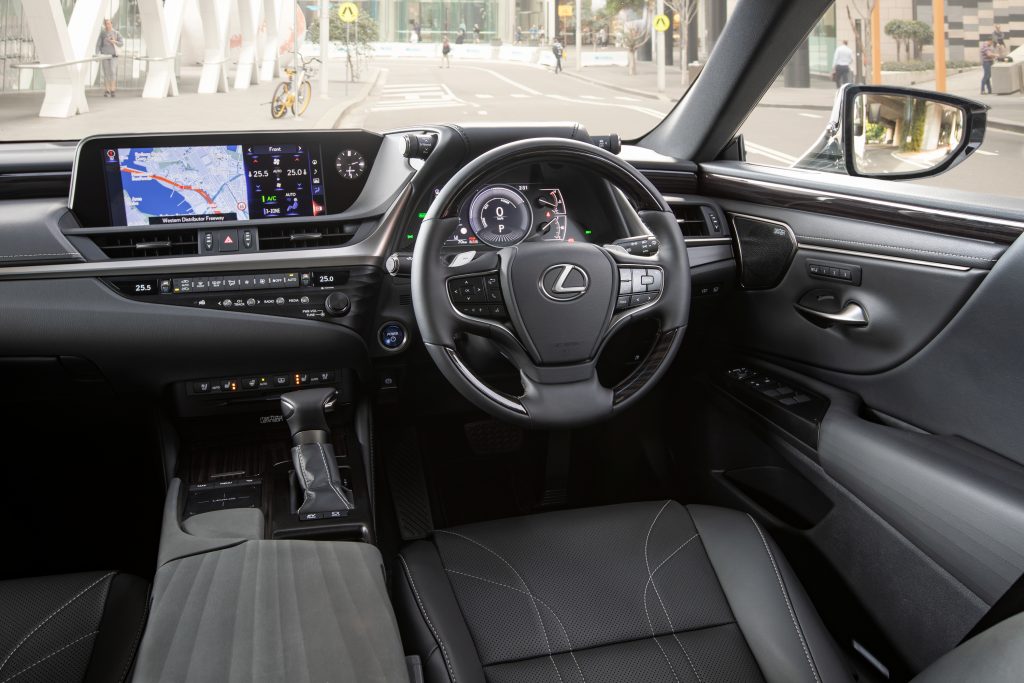
Subtle, low-key interior
If you’ve been reading other reviews of the ES 300h, you may have noticed a fairly common thread of comment that the interior is somewhat bland.
To a certain age group, that may very well be the case, but older observers love the understated elegance and palpable quality. There are no hard plastics to be found; silver and timber highlights are tastefully combined; the storage bins in the console and doors are lined with fabric; everything from switches to glove box door functions with an air of quality. One clever inclusion is the large central console bin lid that can open from either side, meaning both the driver and the passenger can get access (although not at the same time, obviously). And we appreciated the design that allowed the lid to be closed when a cable from the 12-volt plug was being used (the 12V outlet sits in the console bin).
The interior layout is based on the LS, so is a little more dramatic than before. Sprouting from the top of the instrument binnacle are two levers, one to disable traction control (on the right) and another to select drive mode (normal, sport and eco). Selecting Sport mode changes the appearance of the instruments and adds a tachometer.
On the steering wheel (borrowed from the LS) are controls for the superb sound system, cruise control and lane assist functions. The steering wheel itself can be electrically adjusted for reach and rake. Projected onto the windscreen is a large head-up display that conveys speed, the prevailing speed limit, and navigation information.
In the centre of the dash is a huge 12.3-inch screen with the ability to display two menus simultaneously (such as a map and radio station information alongside), although the graphics are beginning to look a little dated. Lexus has persisted with its touch-pad operation, a source of constant frustration in a world where touchscreens have proven to be more efficient and easier to use.
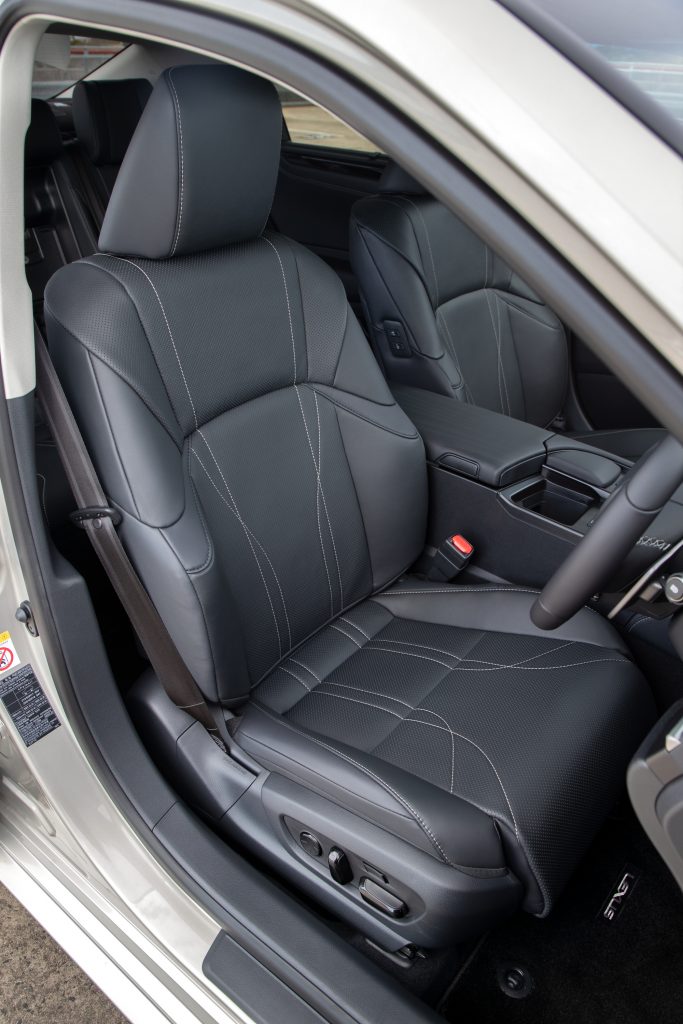
Naturally, the ES 300h gets push-button start (meaning you need to find somewhere to store the key). Better news is that the unloved foot-operated parking brake has been replaced by an electric parking brake.
All ES models are well equipped, even at the entry level. This is a major consideration, since the Luxury Sport model is a hefty $15,000 more than the entry-level Luxury, and you’ll have to decide if you need or will use the additional equipment.
Digital radio is standard; the car we were driving had an odd anomaly that the radio in digital mode would unexpectedly switch between two different stations – in this case Triple J and ABC Classical. While we are happy to enjoy both musical extremes, not everyone will appreciate being jolted away from a soothing Haydn string quartet by dischordant Metallica thrash metal. It may have been something to do with our location; we certainly hope so! (We can now confirm that this is not an issue with the Lexus; the Ford Focus we are currently driving does exactly the same thing. Ed)
Also standard is sat nav, 10-way adjustable heated front seats, dual-zone climate control, LED headlights, auto wipers, powered sunroof and a wireless charging pad for compatible smartphones.
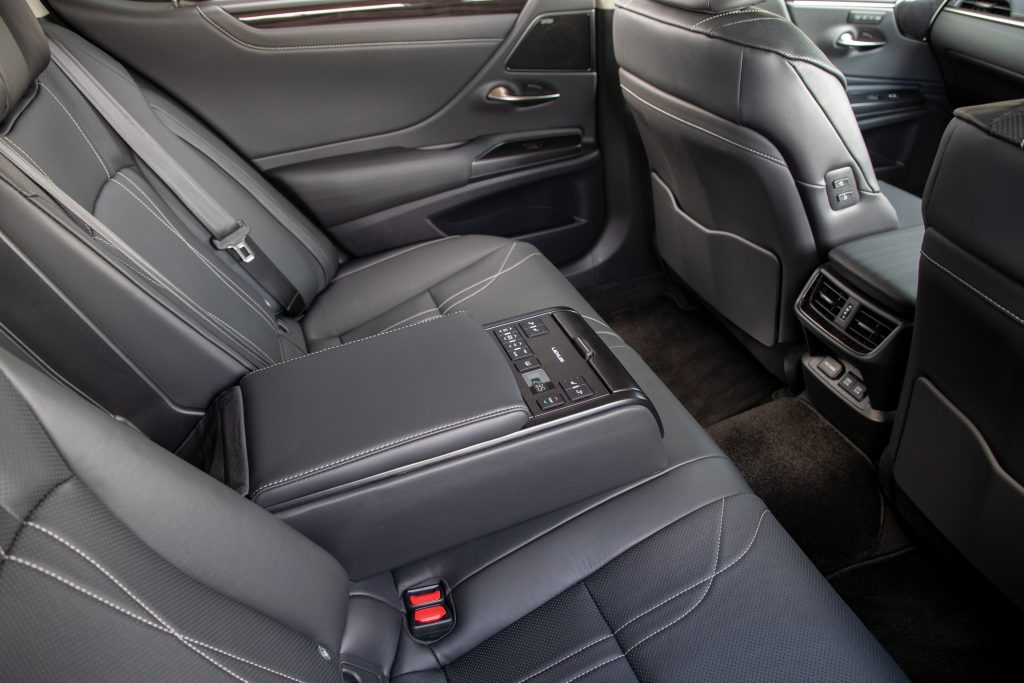
The additional $15,000 for the Sports Luxury adds 18-inch alloy wheels, front seats with integrated cooling and 14-way power adjustment, 17-speaker (!) Mark Levinson surround sound system (Pioneer in the Luxury), tri-zone climate control with humidity sensor, hands-free boot opening, leather-accented seat trim, heated steering wheel and heated rear seats with an electrically-operated recline function. Rear seat passengers get LED reading lights, audio system controls on a flip-down armrest, two USB outlets and a 12-volt socket and a blind on the rear window that automatically retracts when reverse is selected.
Considering the attention to detail, we were disappointed to note that Lexus cruise control doesn’t maintain the set speed on long downhill grades.
Interestingly, the Luxury model is almost $4000 less than the model it replaces, while the Sports Luxury has risen in price by around $3000.
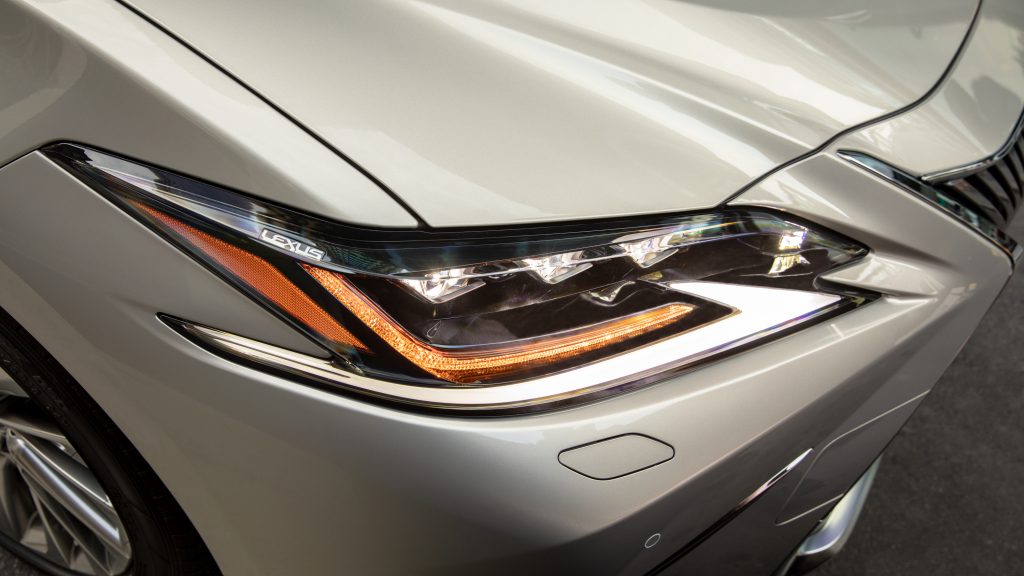
Not a plug-in
Most people are still coming to terms with the various forms of hybrid. The Lexus ES 300h is a self-charging petrol-electric hybrid (the same as the Camry).
Power comes from a four-cylinder 2.5-litre engine that puts out 131kW and 221Nm. This is supplemented by a permanent magnet electric motor with 88kW and 202Nm. The battery is nickel-metal hydride with 204 cells, producing 244.8 volts, mounted below the rear seats. Lithium-ion may have been a better choice, but the Ni-MH battery costs less and has proven its ability and reliability.
While both engine and motor can drive the front wheels, the simple fact is you won’t care. The petrol engine sends power back to the battery pack to recharge it, and this is complemented by energy being taken from the brakes. Lift off the throttle and the car reverts to electric power, although only for short periods, and at speeds below 40km/h or in reverse.
Fuel consumption is a claimed 4.6L/100km (although it requires 95 RON premium unleaded fuel) and even with the comparatively small 50-litre fuel tank, a theoretical range of more than 1000km is achievable.
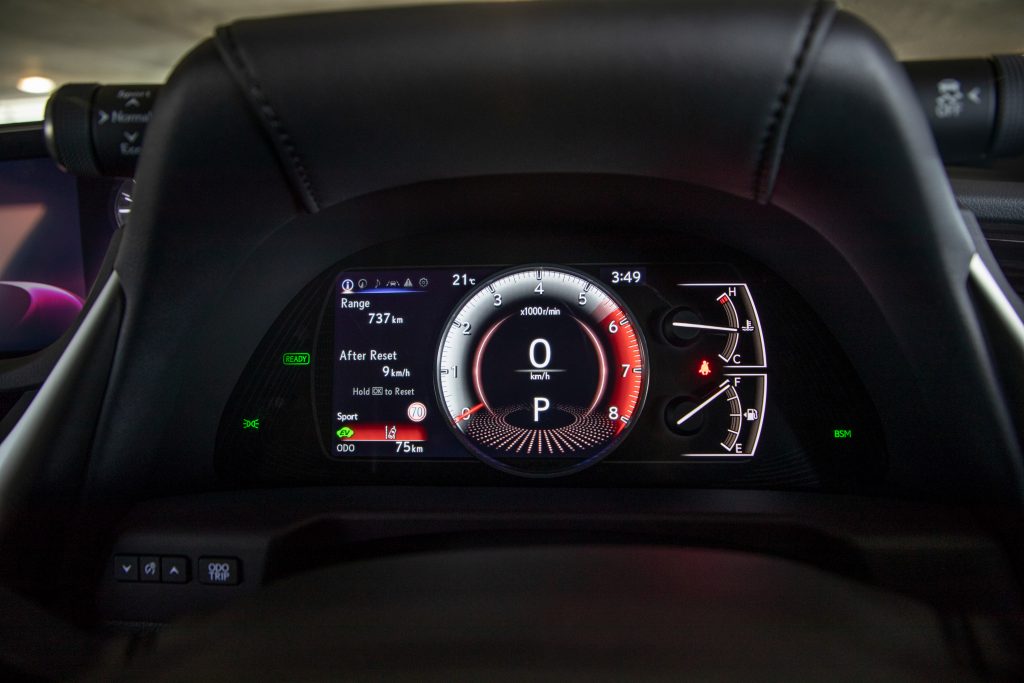
Of course, the silent running of an electric motor can have some downsides: pedestrians still don’t hear you coming and, on one memorable occasion, my wife complained that the remote locking wouldn’t operate. I gently explained to her that she hadn’t turned the car off.
Whichever power source is operating, the lack of wind and tyre noise is commendable. One reason for the lack of noise is something called a Helmholtz resonator in the wheels that cancels out the drone sometimes generated while driving. And nothing compares with the serenity of moving off from standstill in all-electric mode.
Not so brilliant is the steering feel which deliver virtually no feedback, and is only marginally better in Sport mode.
A problem with regenerative braking systems is a slightly strange pedal feel, and the ES 300 isn’t exempt. The brakes can feel slightly snatchy at times, and response can be unexpectedly abrupt, which is not in keeping with the luxury aspirations.
In Sport mode, the engine can sound a little busy at higher revs, but most people will never move the setting from Comfort, so it won’t be an issue.
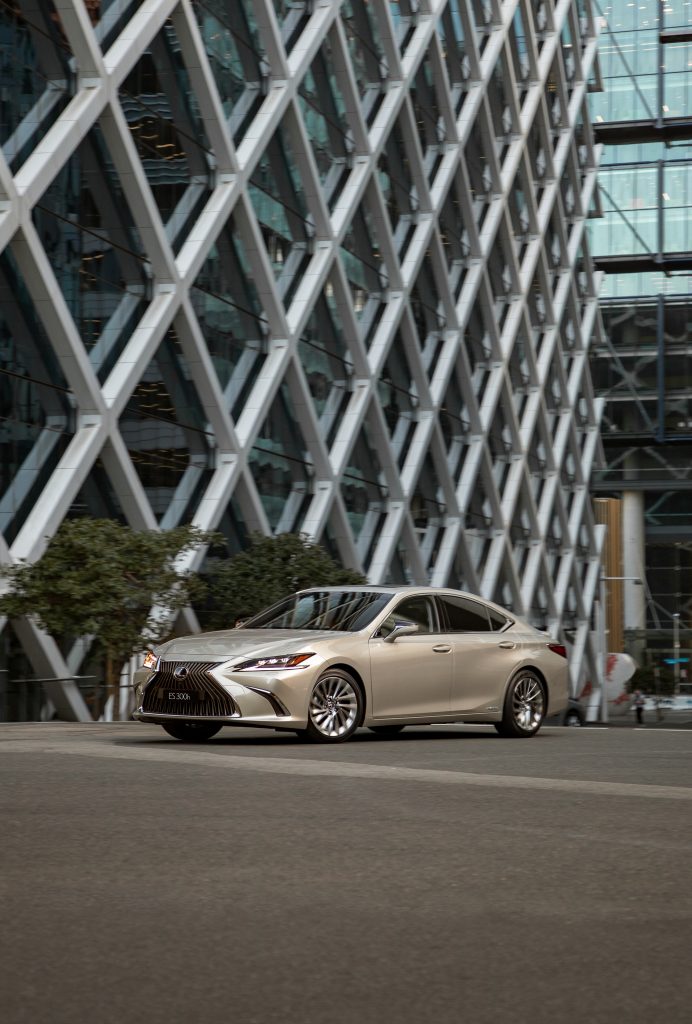
Size is still important
No wonder people are confused by the official class ratings applied to motor vehicles.
The ES 300 is officially classed as a “mid-size sedan”. However, it’s 34mm longer than the Holden Commodore that is classed as a large sedan. In any case, there’s plenty of room inside, including up to 1022mm of rear legroom. Despite the size, the supposedly three-seat rear is really more suitable for two. Headroom in the rear is a little tight, thanks to the sloping roofline.
Boot space is a little disappointing at 454 litres, less than the Camry thanks to the all-new multi-link rear suspension.
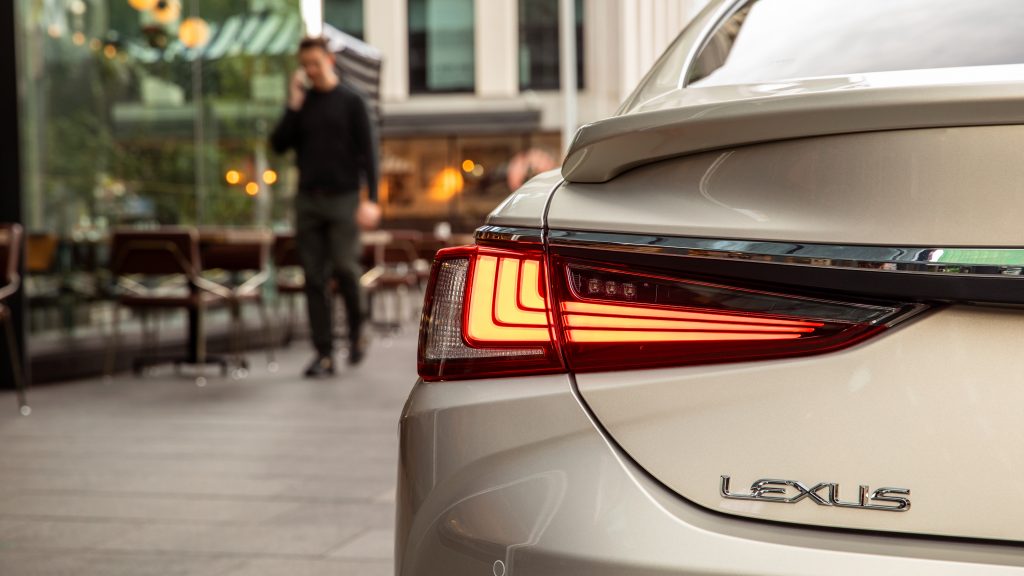
Safety to write home about
The Lexus has a full suite of active and passive safety systems. Autonomous braking with both pedestrian and cyclist detection, adaptive cruise control (operational at all speeds), ten airbags, automatic high beam, traffic sign recognition and a 360-degree camera system. The Sports Luxury adds blind spot monitoring, rear cross-traffic alert, lane assist and an adaptive high-beam system that uses 24 LEDS and constantly adjusts the light distribution pattern. We have praised this technology before, since it delivers “optimal illumination while reducing glare for oncoming drivers”.
The Lexus ownership experience
Lexus initially made its name by delivering an ownership experience that people expected from luxury European brands but rarely received. This includes a free loan car when yours is in for service, or someone sent to pick up and return your car if that’s your preference. Roadside assistance is included in the package.
Summary
We asked the question at the beginning if the Lexus ES 300h has what it takes to challenge the BMW 5-Series and Mercedes-Benz E Class hybrids.
Value-conscious buyers will be drawn to the value for money of a longer standard equipment list, longer warranty and a price significantly less than the German competition.
Whether that will be enough remains to be seen.
